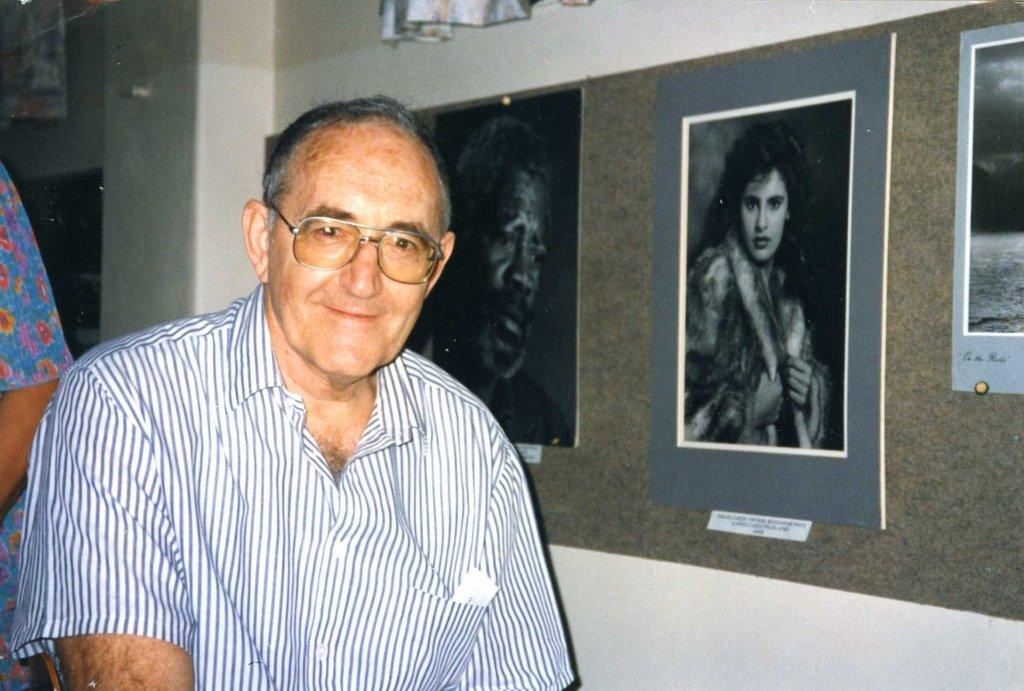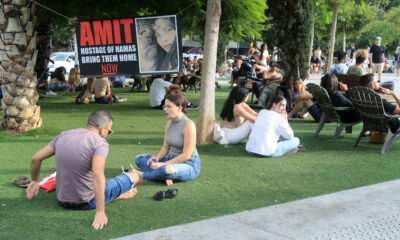
Featured Item

Exhibiting an enduring passion for portraiture
Published
2 years agoon
The Eternal Scholar portrait photographic exhibition portrays the life and loves of Arnold Castle. The SA Jewish Report spoke to his daughter, Elana Castle.
What drew your dad to photography?
My dad hadn’t picked up a camera until his late 40s (the 1970s). He and his brother owned a clothing business. My dad needed to produce a promotional fashion catalogue, and with budget constraints, he decided to do all the photography himself. He asked our neighbour, an avid photographer, for assistance. Dick encouraged my dad to learn the basics of the craft so that he could create his own promotional material. He enrolled in a course at the Ruth Prowse School of Art, where he learned the fundamentals of photography from some of the city’s most esteemed photographers, and soon developed a passion for the medium, setting up a darkroom and portrait studio in his garage.
What was he trying to do with his photographs?
Originally, he was just curious about capturing people and landscapes. Then, he developed an interest in creating portraits that told a story. He was also technically driven – a photograph had to be technically correct and “perfect” for him even to consider presenting it to photographic societies and camera clubs.
How much time did he spend on his portraits, and how did he go about choosing his models and creating images?
He sought out interesting people whom he felt would make compelling character studies. He was known to approach local street vendors, newspaper sellers, and strangers that he encountered on his regular walks along the Sea Point promenade in the hope that they would agree to sit for portraits in his studio. Sometimes, my mom was given the job of sobering them up!
I have so many memories of my dad whiling away incalculable hours in his darkroom, only to emerge late at night or early in the morning in a speckled lab coat, reeking of chemicals, with either a smile or grimace on his face. He was an absolute perfectionist.
Tell us a bit about his models. What did he know of their lives?
He loved hearing about people’s backgrounds and interests. It’s what drew him to the genre of photography in the first place.
What was most important to him in creating these portraits?
I would say my dad shot in two main styles. On occasion, he would shoot his subjects unaltered, but later, his style evolved into a more theatrical approach in which he created portraits through the use of props and costuming.
How did his work change over the years?
He started off with a great love for portraiture. All his early work was produced in black and white and developed in his darkroom. He ventured into colour photography only when digital photography became the norm. By then, he was well into his 70s, yet was committed to learning an entirely new skillset. His Hasselblads and Leicas were replaced with digital single-lens reflex cameras and the darkroom was replaced by a computer loaded with Photoshop and PaintShop Pro. He immersed himself in the world of digital editing and manipulation, shifting genre to his other passion – landscape photography. Until his passing at 87, he continued to develop his craft, producing award-winning photographs captured on field trips through South Africa and on his global travels.
Why is the exhibition titled The Eternal Scholar?
The title refers not only to the name of Arnold’s most treasured image, but also to his enduring passion for the medium of photography. He won a gold medal from The Photographic Society of America for The Eternal Scholar in which he dramatically transformed a working class, glass-grinding craftsman into a scholarly rabbi.
What was your dad like?
He was a businessman with a love of fashion. He was a natty dresser! He was a loyal friend, a family man, a global traveller, and absolutely passionate about photography. He also followed Israeli politics and Liverpool soccer team with equal dedication.
What acknowledgements did he get for his work?
In 1978, he achieved an Associateship of the Photographic Society of South Africa in monochrome prints. In 1984, he received a Fellowship of the Photographic Society of South Africa, an honour bestowed on very few other photographers at the time. Accolades and awards soon followed, including a gold medal from The Photographic Society of America for The Eternal Scholar.
What was his relationship to Judaism?
He grew up in Vredehoek, and attended a public school. It wasn’t always easy being Jewish in that environment, but he was a proud and outspoken Jew. As he told it, he lost a few of his teeth defending himself against the antisemitic bullies at school! He would have been especially delighted to have seen this project come to fruition at the South African Jewish Museum.
How did this exhibition come about?
A chance encounter with Gavin Morris of the South African Jewish Museum almost three years ago led me to mention my dad’s photography. He was as struck by the character and quality of these images.
How did you select the works exhibited?
Once I’d had my initial meeting with Gavin, my dad and I sat down together and selected his favourite images – the 14 images displayed in the museum. We talked about how these photographs came to be. The stories are as fascinating as the thoughtful manner in which they were photographed and edited.
What part did you play in the exhibition?
In August 2019, my dad suffered his first heart attack. I flew straight home from New York to be with him and my family. As he lay in his hospital bed, I asked him if I could have a look through his old work. I had many memories of my dad photographing strangers in our garage. I came across a large collection of portraits that he had taken in the late 1970s and 1980s. They were enchanting. I realised that my dad was an even more talented and skilled photographer than I had realised, and that other than his contemporaries in the photographic industry, so few people had had the opportunity to appreciate his work. My dad was extraordinarily humble, and I felt that these images needed to be shared. And then there was the meeting with Gavin Morris.
- The Eternal Scholar is on at the South African Jewish Museum until 30 September 2022.










